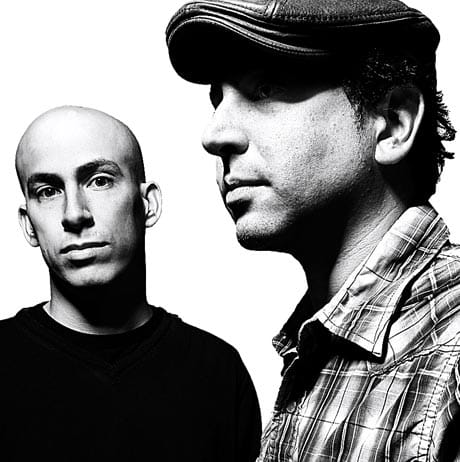Fans of disco revivalists Metro Area should have little trouble imagining what the duo of Morgan Geist and Darshan Jesrani would do with a Fabric mix. Fabric 43 often sounds like the logical continuation of the Geists 2004 mix, Unclassics, which collected obscure disco tracks from the 78 to 85 post-disco crash era. Fabric 43 mines similar territory and tempos but moves further into the 80s, as a generation of artists like Garys Gang, the Disco Four, Dreamhouse and Heaven 17 begin to move into areas such as electro funk and synth pop. Metro Area are interested in the perennial b-sides to the early and mid-80s dance scene, where longer dub and dance versions often pushed poppier tracks into nightclubs. Its an eclectic mix, to be sure, with very early Ministry sharing space with Devo and Jean-Luc Ponty, but its also the resurrection of an almost forgotten era of dance music that fills the gaps between disco, house and techno, an era that acts like the Glimmers and Optimos Betty Botox have begun to focus on more specifically in recent months. Fabric 43 is fun and a bit cheesy, and that cheekiness makes it one of the more enticing Fabric mixes in a couple of editions.
This mix focuses on a period thats post-disco and pre-house, tracks that were mostly relegated to b-sides as dub or dance versions. Why focus on this era now and what can todays dance music climate learn from these records?
Morgan Geist: Its some of the music we love. Id venture to say todays dance music climate can learn a lot from almost any other era besides, say, the late 90s. It kind of feels like were in the late 90s again to me, maybe because thats right about when we felt alienated by new records and decided to start Metro Area. Thats kind of how it feels between the tuneless, aggressive stuff people seem to like in most clubs, with the over-repetitive bootleg edits on the "underground side.
How big are your respective record collections?
I can say women visiting my house have never complained about the size of my record collection, but maybe they are just being kind to me and dont want to hurt my feelings. I only buy stuff I want to listen to and learn from. Im not a collector. Theres loads of stuff in mine you probably would get weird looks for playing at a dance club.
(Fabric)This mix focuses on a period thats post-disco and pre-house, tracks that were mostly relegated to b-sides as dub or dance versions. Why focus on this era now and what can todays dance music climate learn from these records?
Morgan Geist: Its some of the music we love. Id venture to say todays dance music climate can learn a lot from almost any other era besides, say, the late 90s. It kind of feels like were in the late 90s again to me, maybe because thats right about when we felt alienated by new records and decided to start Metro Area. Thats kind of how it feels between the tuneless, aggressive stuff people seem to like in most clubs, with the over-repetitive bootleg edits on the "underground side.
How big are your respective record collections?
I can say women visiting my house have never complained about the size of my record collection, but maybe they are just being kind to me and dont want to hurt my feelings. I only buy stuff I want to listen to and learn from. Im not a collector. Theres loads of stuff in mine you probably would get weird looks for playing at a dance club.
